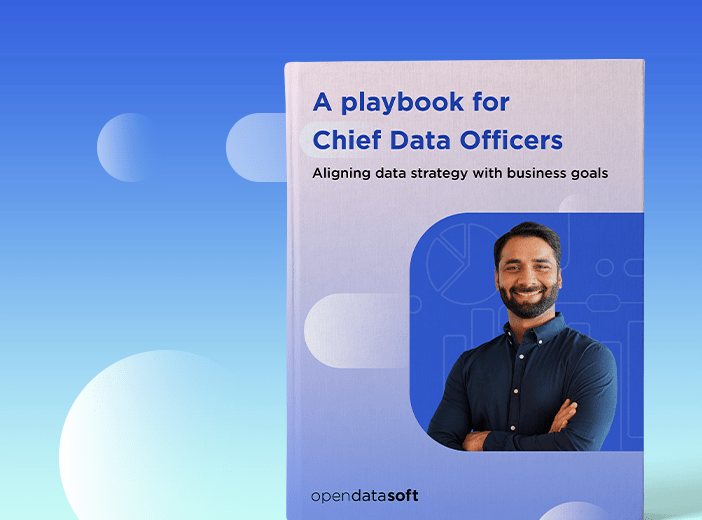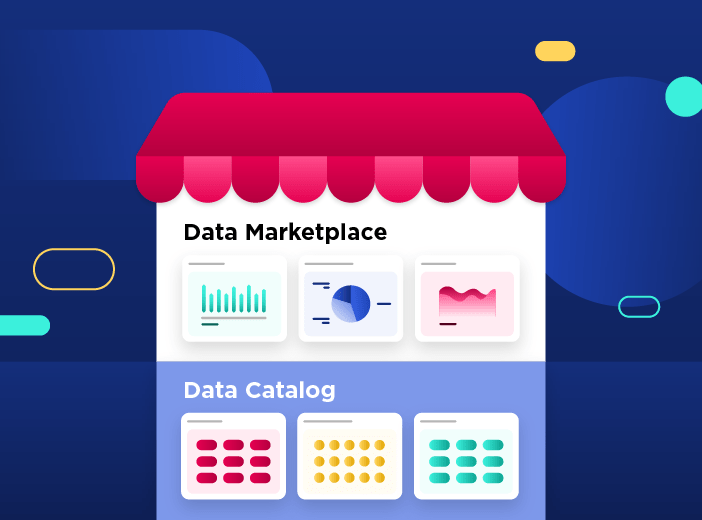Overcoming the top 5 challenges faced by Chief Data Officers
Chief Data Officers are central to organizations becoming data-centric, maximizing data sharing to ensure that everyone has immediate access to the information they need. We explore the challenges they face - and how they can be overcome with the right strategy and technology.

Rising data volumes and the pressing need to turn this information into value is accelerating the importance of the Chief Data Officer (CDO) role. While just 12% of Fortune 1000 companies had a CDO in 2012, this has now grown to over two-thirds, and continues to climb. CDOs are increasing in seniority, with more and more becoming board level positions, central to achieving digital transformation and successfully deploying technologies such as generative AI.
However, the CDO role is complex, covering multiple areas and skill sets, and is often not well-understood by the rest of the business. All of this brings greater pressure and challenges to data leaders – in this blog, based on our new CDO playbook, we’ll explain what the main ones are and how they can be successfully overcome.
Understanding the top 5 challenges for Chief Data Officers
Every organization is different, so the challenges that CDOs face will vary depending on their company’s sector, data maturity level and business aims and objectives. However, there are five pain points that are common to most organizations, and that CDOs need to solve if they are to deliver value to the business.
A lack of time and resources
Organizations understand the need to be data-driven and to utilize their data for competitive advantage. This brings pressure on CDOs to deliver results quickly, particularly given current business interest in AI, which relies on good quality, accessible and reliable data to deliver positive results. However, CDOs often need to start from scratch when it comes to creating their programs, building a team with the right skills and an infrastructure that can handle the growing volumes and variety of data. Resources can be limited, and data quality can be poor, with a lack of processes to successfully collect, enrich, manage and share data. Often there is a need to invest in longer-term technology solutions which don’t deliver business results for some time.
An unclear role and responsibilities
As a relatively new role, there is no consistent job description for the CDO. There can be cross-over with other C-level titles such as the Chief Information Officer, Chief Digital Officer and now Chief AI Officer. This means that other business functions aren’t clear about what the CDO is – and isn’t – responsible for, particularly given that data is being created across the entire organization, bringing a risk of departmental silos. Senior management can have over-ambitious expectations around how quickly benefits will be delivered, increasing the pressure on data leaders.
The CDO role itself covers both reactive activities, such as ensuring compliance, along with proactive elements, such as increasing data usage and launching new data services. Balancing the two areas can be difficult, with a requirement for CDOs to educate the business about the value they bring. The job therefore requires a mix of business, communication, change management, and technical skills, with successful CDOs needing to be able to motivate and convince others about the power of data to drive competitive advantage at a strategic and tactical level.
A need to ensure compliance and governance
Ensuring regulatory compliance with legislation such as the GDPR and CCPA is a key responsibility for CDOs, but can be hard without having a full picture and inventory of the organization’s data and how it is created, stored and protected. This takes time to create, and can mean CDOs have to focus on governance at the expense of innovation, leading to them becoming pigeonholed as a reactive, cost center rather than a positive contributor to the bottom line. There is also the risk that departments and senior management teams don’t engage with governance programs, seeing it as an attempt to enforce bureaucratic rules and processes, driving a lack of buy-in and undermining the CDO role.
Pressure to deliver value
Businesses increasingly understand the importance of data to their operations, particularly in the context of AI. However, senior management may not understand the amount of work required to ensure that data is reliable, high-quality and provides tangible business value. This leads to unrealistic expectations around what can be achieved, and adds to pressures on CDOs to perform in the short- and medium-term. CDOs need to be able to scale and industrialize data use, which means focusing on the right use cases that will deliver fast ROI in order to get buy-in and unlock further investment.
Overcoming organizational data immaturity
When it comes to data, many organizations suffer from immaturity in terms of both technology and culture. Despite significant investments, the data stack is often incomplete, with data solely accessible and usable by technical experts, limiting its usefulness and preventing sharing on a wider scale.
Additionally, culturally many organizations (and employees) are not confident in sharing and using data in their everyday working lives. Departmental silos hold back collaboration and can lead to a mentality that guards data, rather than shares it, even though this will considerably increase value for the business. On a personal level, employees are unlikely to have the skills needed to discover, understand, and reuse data in its raw form and even if they find potentially useful data assets, they may not trust that they are reliable or a fit for their needs.
Best practices to deliver success for Chief Data Officers
CDOs face significant challenges to delivering tangible results. However, as the role matures, there is a growing body of best practices that they can tap into to drive their own programs, overcoming obstacles to ensure they provide value.
Key best practices include:
Set realistic expectations
Maximizing the use and impact of data is a journey, not a destination. The sheer volume of data, the variety of sources it comes from, and the velocity at which new data is being created all mean that it will take time to master the organization’s data and turn it into business value. That means that CDOs need to set and agree realistic expectations with senior management and departmental leaders, explaining what can be achieved over the short-, medium-, and long-term.
Start with collaboration
One of the biggest challenges to success is not technical, but organizational, with different departments focused on their own data, rather than wanting to share it more widely. Building collaboration and engagement around a common data strategy that respects and incorporates departmental needs is therefore critical, particularly given the lack of central resources that many CDOs suffer from. CDOs need to act as orchestrators, bringing together data owners from across the business and focusing them on overall business goals.
Focus on specific use cases
CDOs need to prove themselves and their strategy through early wins. To achieve this they should select the right use cases to prioritize. By focusing on specific business problems that need to be solved, these early projects will deliver ROI and buy-in from different departments as everyone will see the clear value of data. In turn, this will unlock future budgets and get senior management onside.
Increase efficiency and productivity
Maximize existing resources by automating as much of the data collection, management, and publication process as possible. Adopt easy-to-use tools that lower time spent on administration, enabling data teams to focus on adding value and engaging users to increase data sharing.
Build a complete data stack
The majority of organizations have invested heavily in their data stack. However, while they may have the technology in place to collect, catalog, and process data, many don’t have a solution in place to effectively share data with non-technical employees across the business. Putting in place this “last mile” data portal solution not only makes data usable at scale, but also ensures ROI from the overall data stack.
Use data governance as a business enabler
Too often, data governance is seen as a reactive, policing function, meaning it struggles to demonstrate value to the wider business. Instead, engage the wider organization by showing the benefits governance brings, especially how granular access rights combine security and compliance with the ability to seamlessly deliver data to those that need it through data portals.
Educate and empower the business
Many employees are wary of data – either because they aren’t sure what it actually covers or because they don’t have the technical skills to discover and reuse raw data. Empower them by sharing data through a self-service, e-commerce style data portal experience. This enables users to easily discover the relevant, trustworthy data assets they need for their roles, available through a variety of formats, such as data visualizations, dashboards and via APIs to meet their specific needs.
Constantly monitor and improve
CDOs need to understand how their data assets are being used, who is using them, and what they are being used for. This enables them to improve processes, add new, similar datasets and share example use cases across the business. They therefore need to deploy data lineage features within their data portal to monitor end-to-end usage of different data assets. This highlights opportunities for improvement, and helps demonstrate value to the wider business.
Find out more on these, and other best practices in our new CDO playbook. Download your copy here.
How a data marketplace enables success
To deliver benefits and show ROI CDOs have to be able to connect everyone in the business to data in a seamless, straightforward manner. Every employee, no matter their level of technical and data skills, has to have secure access to the same single source of truth, and be able to use this data in ways and formats that fit their needs. Existing data catalogs only provide a technical inventory of metadata, limiting their use to experts, rather than providing a single entry point to all data, for all employees. This makes it vital for CDOs to invest in a centralized data portal or data marketplace to deliver these capabilities. It provides an e-commerce style experience for users, is built on granular access rights to protect security and enables data assets to be easily discovered and consumed at scale. Data portals free information from silos and help the whole organization become more data-centric, turning data into real business value.
Want to find out more about the challenges that today’s CDOs face and how to overcome them? Download Aligning data strategy with business goals, our new playbook for CDOs to equip yourself with everything you need for success.




